How Clean Makeup Brands Are Taking Over the Beauty Industry
flareAI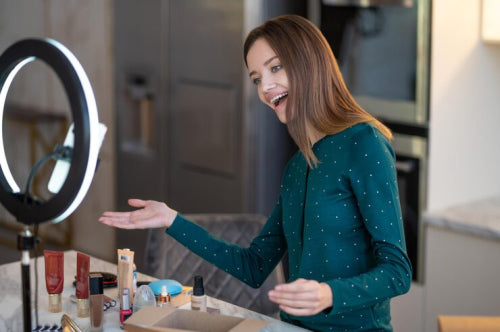
Quick Listen:
Envision the chaotic energy of a Dubai souk at dusk, where vendors hawk everything from spiced teas to silk scarves, and a sharp-dressed executive lingers over a display of iridescent eyeshadows. Her fingers trace the packaging, eyes narrowing at claims of "toxin-free" and "USDA organic." In a region where the sun scorches skin by day and air-conditioned opulence reigns by night, these aren't mere marketing ploys they're essential shields against the hidden hazards of conventional cosmetics. This scene, replicated in high-end boutiques from Singapore's Orchard Road to Mumbai's bustling bazaars, signals a profound pivot: clean makeup isn't encroaching on the beauty world; it's commandeering it, one discerning consumer at a time.
Many women feel trapped by makeup that hides flaws but risks irritation and hidden toxins. This daily choice weighs heavily, dimming confidence over time. Liht Organics invites you to embrace beauty differently. With up to 90% USDA-certified organic ingredients, our vegan, cruelty-free products deliver vibrant color and gentle care, letting you glow with confidence, knowing your skin is nurtured, not compromised. Shop Now!
Setting the Stage for Clean Beauty
Across the sweltering streets of Kuala Lumpur and the sprawling sands of Riyadh, a transformation brews. Women and increasingly, men are upending longstanding beauty rituals, propelled by revelations about the endocrine disruptors and carcinogens embedded in everyday mascaras and foundations. Clean beauty, distilled to its essence, encompasses formulations devoid of the most egregious offenders: parabens, synthetic fragrances, formaldehyde releasers, and heavy metals that accumulate like unwelcome guests in your bloodstream. Instead, it champions plant-derived actives, mineral pigments, and barrier-repairing emollients that fortify the skin's natural defenses while delivering the coverage and color we crave.
This ethos resonates deeply in Liht Organic's core markets the United Arab Emirates, Singapore, Malaysia, the United States, Australia, Saudi Arabia, and India where environmental consciousness intersects with cultural reverence for wellness. In the US and Australia, coastal dwellers prioritize reef-safe sunscreens and biodegradable glitters to safeguard fragile ecosystems. India's fusion of Vedic traditions and urban hustle amplifies the appeal of ayurvedic-infused organics that honor heritage while tackling modern pollution. Liht Organics, with its commitment to over 80 percent clean organic ingredients, emerges as a beacon. These aren't watered-down alternatives; they're robust performers foundations that withstand 12-hour shifts, lip colors that endure humid commutes crafted in state-of-the-art facilities in the USA and Singapore. Safe enough to ingest, they double as subtle skincare, mending the invisible toll of daily wear. As demand escalates from monsoon-season minimalists in Mumbai to trailblazing professionals in Sydney, the cosmetics counter evolves from a battlefield of bold claims to a sanctuary of substantiated serenity.
Emerging Trends in Clean Makeup
Step into a flagship store in New York's SoHo or Melbourne's Collins Street, and the shift is palpable: ingredient decks now rival novels in detail, with QR codes linking to verifiable supply chains. This transparency mandate stems from empowered buyers wielding apps like Think Dirty or EWG's Skin Deep database, dissecting formulations mid-browse. Brands, once guardians of proprietary "magic," now flaunt their openness detailing the provenance of every jojoba ester or rice bran extract. It's a stark evolution from the pre-millennial era, when vague "colorants" masked a spectrum of synthetics now linked to allergies and hormonal havoc.
Packaging, long a silent polluter, faces its reckoning. Glass jars yield to post-consumer recycled plastics; single-use palettes give way to magnetic modular systems. Pioneers experiment with mycelium-based enclosures that decompose in weeks, or algae-derived films that dissolve harmlessly. In eco-prioritizing Singapore, where national campaigns tout "zero waste," these innovations transcend novelty they're non-negotiable, aligning with a populace that recycles 60 percent of its refuse. Deeper still lies ethical procurement: traceability tech maps shea from Ghanaian collectives to Malaysian palm-free alternatives, ensuring fair wages and biodiversity preservation. No more shadowy imports; today's clean brands audit every link, from seed to shelf.
Vegan and cruelty-free certifications have ascended from niche to norm, driven by a Gen Z cohort in the Gulf states that wields social media like a scalpel #CrueltyFree trends can tank stocks overnight. Inclusivity fractures the Eurocentric mold: shade ranges now span 40-plus options, accommodating the warm ambers of Saudi complexions to the cool olives of Indian heritage, and everything in between. Australia's First Nations-inspired earth tones join the UAE's multicultural palette, redefining radiance as reflective of reality. This inclusivity isn't performative; it's profitable, broadening appeal in diverse diasporas and fostering a beauty narrative that's as varied as the regions Liht serves.
Real-World Examples: Liht Organics Leading the Charge
Liht Organics commands the spotlight not through hype, but through unyielding efficacy. Its arsenal silky concealers, matte powders, luminous highlighters harnesses that signature 80 percent organic threshold, blending certified botanicals with performance polymers for all-day adhesion. Envision a dewy blush that infuses vitamin C for collagen boost, or an eyeliner fortified with aloe to soothe post-wear. Produced under rigorous GMP standards in American labs and Singaporean innovation hubs, these products transcend vanity; they invest in dermal health, countering urban aggressors like blue light and PM2.5 particulates prevalent in Delhi or Dubai.
Retailer partnerships underscore this prowess: snag Liht's essentials at Gold Apple outlets in the UAE, where luxury meets accessibility, or browse Faces counters across the Gulf for in-store trials that convert doubters. Compare to Ilia Beauty's cult-favorite Super Serum Skin Tint, laced with niacinamide for a no-makeup glow that thrives under Australian UV assault, complete with tree-planting pledges per purchase. RMS Beauty, trailblazing since 2009, leans into unrefined coconuts for balmy, breathable finishes that eschew silicones. Beautycounter's crusade against the "Toxic Twelve" from lead acetate to triclosan equips consumers with advocacy kits, echoing Liht's transparency ethos. Yet Liht distinguishes itself with that ingestible purity, ideal for sensitive souls navigating Singapore's tropical mugginess or Saudi Arabia's desert dryness, where irritation strikes swift.
Data underscores the momentum: the clean beauty sector surged to $7.15 billion in 2024, on track for $8.02 billion in 2025 with a 12.1 percent compound annual growth rate. Parallel forecasts show it expanding from $8.25 billion in 2023 at a 14.8 percent CAGR, culminating in $21.29 billion by 2030. Anecdotes abound: a Kuala Lumpur content creator ditched her go-to compact for Liht's organic counterpart, banishing cystic acne amid viral TikTok tutorials. In Delhi's vibrant emporiums, a boutique owner reports 35 percent year-over-year gains, fueled by Instagram unboxings that unpack the "edible elegance" angle. These vignettes illustrate clean's conquest not outliers, but harbingers of an industry realignment.
Key Challenges, Limitations, and Risks
Yet authority demands candor: clean beauty's ascent is no frictionless glide. Premium sourcing harvesting kakadu plum from Australia's arid wilds or goji from Himalayan plateaus escalates costs, rendering a Liht gloss stick pricier than its mass-market mimic. This premium positioning alienates budget-strapped households in Malaysia's heartlands or India's tier-two cities, where affordability trumps ideology. Brands counter with entry-level minis and subscription models, but equity gaps persist, underscoring the need for scalable innovation.
Skepticism simmers beneath the surface. "Will it smudge in Singapore's downpours?" query wary shoppers, valid concerns given organic's occasional deference to nature's volatility over lab-engineered longevity. Liht mitigates with hybrid tech natural waxes fused with bio-mimics that ensures budge-proof wear without compromise. Trust deficits loom larger: greenwashing scandals erode faith, with "organic" misused as a catch-all. Liht combats this via exhaustive disclosures full INCI lists, allergen flags, third-party assays empowering buyers to verify claims. In trust-scarce UAE luxury circles, where heritage houses dominate, such rigor builds bridges, transforming "What even is this?" into "Where's my refill?"
Regulatory patchwork compounds woes: the FDA's laissez-faire stance contrasts Europe's stringent REACH protocols, breeding confusion over "clean" benchmarks. Supply disruptions from California's droughts curbing avocado oils to geopolitical ripples in shea routes amplify volatility. Still, adversity accelerates progress; Liht's TikTok deep-dives into formulations, from antioxidant profiles to pH balances, educate and reassure, turning objections into endorsements.
Opportunities and Business Impacts
Invert the lens, and horizons gleam. That $8.02 billion 2025 trajectory heralds a bonanza for authenticity-driven disruptors. Fidelity flourishes amid candor: Australian loyalists extol Liht's endurance in surf-side testimonials, morphing trials into recurring revenue streams. Geographic forays multiply: envision Liht gracing Namshi's lifestyle hubs or The Green Collective's Singapore assortments, infiltrating UAE emporiums and Indian online bazaars with precision-targeted drops.
Collaborations catalyze virality. Pair with Gulf influencers for Instagram Reels illustrating monsoon-proof multi-taskers, or ally with Saudi sustainability collectives for pouch-bundled kits. The cascade? Resilient enterprises, enlightened patrons, a sector sloughing synthetics for symbiosis. Amid projections of global beauty expenditures swelling to $589 billion by 2030, clean formulations aren't footnotes they're the foreword to fiscal flourishing.
Expert Insights and Future Outlook
As How Clean Makeup Brands Are Taking Over the Beauty Industry elucidates, this paradigm isn't ephemeral it's etched in the annals of consumer evolution. Sustainability forms the foundation, with safety and scrutiny as its sentinels. Visionaries foresee a horizon where AI-driven diagnostics prescribe personalized phytocomplexes, and distributed ledgers chronicle every harvest to hue.
Anticipate fortified frameworks harmonized global standards curbing charlatans and audacious advances, such as lab-grown sea silk for shimmer sans shellfish. A democratized aesthetic, unfettered by frontiers, pulses through Instagram and TikTok veins. For that souk-savvy seeker in Dubai or the power-walker on Singapore's sunlit avenues, the verdict is unequivocal: transient allure pales against enduring éclat. Embrace Liht Organics, trace its trajectory on social scrolls, and partake in the procession. Your visage, and our shared orb, stand to gain immensely.
Frequently Asked Questions
What exactly is clean makeup and how is it different from regular cosmetics?
Clean makeup refers to cosmetic formulations that are free from harmful ingredients like parabens, synthetic fragrances, formaldehyde releasers, and heavy metals that can accumulate in your bloodstream. Instead, clean makeup uses plant-derived actives, mineral pigments, and barrier-repairing emollients that actually fortify your skin's natural defenses while providing the coverage and color you want. Unlike conventional cosmetics that may contain endocrine disruptors and carcinogens, clean makeup brands like Liht Organics create products with over 80% organic ingredients that are safe enough to ingest while delivering professional-grade performance.
Are clean makeup products as effective and long-lasting as traditional makeup?
Yes, modern clean makeup has evolved to match and often exceed the performance of traditional cosmetics. Clean beauty brands now use hybrid technology that combines natural waxes with bio-mimetics to ensure budge-proof wear without compromising on safety. For example, clean foundations can withstand 12-hour shifts and lip colors endure humid commutes, while also providing skincare benefits like vitamin C infusion for collagen boost or aloe fortification to soothe skin. The key is choosing brands that invest in rigorous testing and state-of-the-art manufacturing facilities to create products that perform reliably in various climates and conditions.
Why are clean makeup products more expensive than regular makeup?
Clean makeup typically costs more due to premium sourcing of organic ingredients, such as harvesting kakadu plum from Australia's arid regions or obtaining goji berries from Himalayan plateaus. The rigorous testing, third-party certifications, and transparent supply chain verification also add to production costs. However, many brands are addressing affordability concerns by offering entry-level minis and subscription models. While the upfront cost may be higher, clean makeup products often provide added skincare benefits and are produced under stricter quality standards, making them a worthwhile investment for long-term skin health.
Disclaimer: The above helpful resources content contains personal opinions and experiences. The information provided is for general knowledge and does not constitute professional advice.
You may also be interested in: Organic Makeup That Heals As It Conceals – Liht Organics
Many women feel trapped by makeup that hides flaws but risks irritation and hidden toxins. This daily choice weighs heavily, dimming confidence over time. Liht Organics invites you to embrace beauty differently. With up to 90% USDA-certified organic ingredients, our vegan, cruelty-free products deliver vibrant color and gentle care, letting you glow with confidence, knowing your skin is nurtured, not compromised. Shop Now!
Powered by flareAI.co
شاركي
You May Also Like
-

Discovering Self-Love Through Clean Beauty: A Guide to Nurturing Your Inner and Outer Self
In the journey of self-love, every action, thought, and choice we make towards ourselves can be a powerful affirmatio...
-

The Science Behind Organic Makeup and Pregnancy: A Gentle Choice for Moms-to-Be
wp:paragraph Pregnancy is a wonderful and exciting journey that comes with added responsibilities of ensuring the ...
-
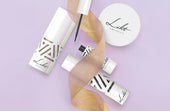
Liht Organics Black Friday: Enhance Your Beauty Routine with Vegan, Organic, and Natural Essentials!
As the holiday season approaches, there’s a sparkle in the air, and we at Liht Organics are thrilled to add a touch o...
-

Organic Makeup That Heals As It Conceals
Liht Organics Empowers Women With Only The Best For Their Beauty NeedsLiht Organics combines the best of both worlds:...
-
![[FEATURE] Liht Organics to debut at TFWA Asia Pacific show](//lihtorganics.com/cdn/shop/articles/1_1.png?v=1759328400&width=170)
[FEATURE] Liht Organics to debut at TFWA Asia Pacific show
‘Organic makeup that’s safe enough to eat’ — Liht Organics to debut at TFWA Asia Pacific show by Hannah Tan | 24 Apri...
-
![[FEATURE] The Singapore-based organic makeup brand is a first-time exhibitor at this year’s TFWA Asia Pacific Exhibition in Singapore in May 2025](//lihtorganics.com/cdn/shop/articles/2_1.png?v=1759328386&width=170)
[FEATURE] The Singapore-based organic makeup brand is a first-time exhibitor at this year’s TFWA Asia Pacific Exhibition in Singapore in May 2025
TFWA Asia Pacific preview: Liht Organics targets expansion in travel retail By DFNI Staff Writer The Singapore-bas...
-
![[FEATURE] Travel Retail Awards 2025 finalists - Best Make-up Product Color-Intense Liquid Lipstick – Liht Organics](//lihtorganics.com/cdn/shop/articles/4_e2f54f0f-fcd1-46e7-9990-fc9d29e35131.png?v=1759328382&width=170)
[FEATURE] Travel Retail Awards 2025 finalists - Best Make-up Product Color-Intense Liquid Lipstick – Liht Organics
Revealed: Travel Retail Awards 2025 finalists By Trbusiness Editor | Wednesday, 23 July 2025 15:21 TRBusiness is th...
-
![[FEATURE] Liht Organics targets expansion in travel retail](//lihtorganics.com/cdn/shop/articles/3_1.png?v=1759328346&width=170)
[FEATURE] Liht Organics targets expansion in travel retail
Organic makeup that’s safe enough to eat: Liht Organics targets expansion in travel retail By Laura Shirk Liht Organ...
-

[FEATURE] Gulf News: TikTok’s strawberry girl makeup trend: How to achieve that rosy glow inspired by Hailey Bieber
Berry, berry, strawberry, love strawberry, like BTS’s J-Hope, the band’s strawberry enthusiast once said. If only we ...
-

[FEATURE] Gulf Business Magazine : Liht-ing it up
Our founder, Nerissa Low was interviewed by Gulf Business, where she discussed her experience launching Liht, an orga...
-

[FEATURE] Daily Vanity: 11 local beauty brands owned by women – you’d be surprised how many of them started in their kitchens!
When we give a shout-out to homegrown beauty businesses, we aren’t just doing it for the sake of supporting local. Th...
-

[FEATURE] Entrepreneur ME : UAE-Based Liht Organics' Nerissa Low On Crafting An Organic Makeup Brand For The Skin-Conscious Consumer
As is the case with the origin stories of so many startups out there, Liht Organics came into being after its founder...
-
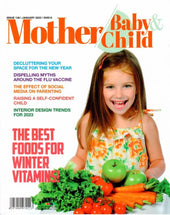
Mother, Baby & Child Editor’s Pick: Liht Organics Lights the Way
Excited to be the Mother, Baby & Child’s ‘Editors pick’ for their choice of Beauty brand.The article outlined the...
-
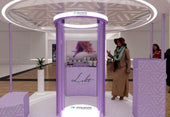
[FEATURE] EmiratesWoman - 8 Fabulous things to do in Dubai this weekend
by SARAH JOSEPHJANUARY 20, 2023Try the UAE’s first virtual reality makeup podium The popular VR-backed makeup exper...
-

Nerissa Low of Liht Organics On The Self-Care Routines & Practices Of Busy Entrepreneurs and Business Leaders
By Maria Angelova, CEO of Rebellious Intl.Date: 4 January, 2023Nerissa Low of Liht Organics On The Self-Care Routines...
-

Liht Organics: Meet the beauty brand that has caught the eye of the Royal Family of Bahrain
By Crystal Lee Digital Editor28 May 2021The world of clean beauty is, ironically, rather murky.That’s because the ter...
-

The latest luxury makeup and skincare drops, including serums, concealers, moisturisers and more
Allisa Noraini21 May, 2021It’s fine to splurge in the name of beauty. This new range of makeup and skincare drops are...
-

These SG Beauty Bosses Are Conquering The World Despite The Pandemic
First Singapore, then the US, China, Germany, Dubai, UK, South Korea, Malaysia, Hong Kong, Thailand, Australia… By...
-

Nerissa Low, Founder at Liht Organics
Written by Callum LaingPosted on December 26, 2020 10 min readNerissa Created Organic Makeup That Actually Improve...
-

Liht Organics – Makeup That Makes You
At Liht Organics, our mission is simple – to provide women (and men) with a safe experience when it comes to beauty s...
-

Why Should We Use Organic Makeup?
We cannot deny that cosmetics is one of our beauty essential item – it enhances our looks and conceals our flaws. Man...
-

Organic makeup and why your skin will love it: Liht Organics founder
By Jolene,July 27, 2020 |7 mins readOrganic make up in Singapore is a trend that is fast-catching on here as we becom...
-

[FEATURE] DC EDIT – Makeup & Confidence: Talking Self-love With Liht Organics’ Founder Nerissa Low
Makeup and confidence — the long, drawn-out fight that many of us have grappled with personally. I’m sure I’m not the...
-

[FEATURE] THE FEMALE CULTURE – I TRIED LIHT ORGANICS AND THIS IS HOW IT WENT
I’m a huge fan of makeup and I love testing out new products so I was pretty excited to get my hands on Liht Organics...
-

[FEATURE] SINGAPORE MOTHERHOOD – The Best Organic and Natural Skincare and Makeup for Pregnant and Breastfeeding Mums in Singapore
Pregnancy is a hormone-volatile period for women. One place where this makes itself seen and felt is on the skin. Som...
-

[FEATURE] AFTER CLINIC HOURS – 21 Back to Beauty Deals in Singapore (2020)
With spas and salons shuttered island wide for two months, I never thought I’d be this desperate for a good old’ Swed...
-

[FEATURE] KUL AL USRA MAGAZINE JUNE 2020
Choosing Pinks & Oranges this summer!Featured: Moisture Burst Lip Glaze in Pink Cupcake.
-
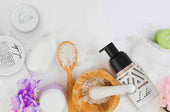
[FEATURE] Award-winning Organic Makeup Brand Liht Organics Gives Back to the Community & Environment During COVID-19
Singapore’s First Organic Makeup Brand with 100% Natural Makeup That Is Safe Enough to Eat Liht Organics promises org...
-

[FEATURE] COSMETICS DESIGN ASIA – COVID-19 ‘WAKE-UP CALL’: SINGAPORE’S LIHT ORGANICS SEES GLOBAL POTENTIAL AMID CLEAN BEAUTY CLAMOUR
Original article at: https://www.cosmeticsdesign-asia.com/Article/2020/06/26/Singapore-s-Liht-Organics-sees-globa...
-

[FEATURE] THE LIFESTYLE COLLECTIVE – BEAUTY SHOULD NEVER BE CRUEL
Date: June 24, 2020Author: Kristen Chen Liht (pronounced as light) Organics is a Singaporean organic makeup brand t...
-

[FEATURE] NÜYOU – 7 ONLINE PLATFORMS TO SHOP FOR CLEAN BEAUTY PRODUCTS
纯净美容(Clean Beauty)的美肤概念,再近几年来越来越受欢迎。随着消费者“爱自己”的美容意识逐步提升,对于用在脸上的所有物品、成分更为关注和讲究。以广义来讲,纯净美容主张使用“干净”成分和无毒配方,让肌肤的可能性损伤减到最小...
-

[FEATURE] COSMOPOLITAN MIDDLE EAST – 3 BENEFITS OF SWITCHING TO ORGANIC BEAUTY PRODUCTS THIS RAMADAN
By Cosmo – May 08, 2020Nerissa Low, founder of Liht Organics, shares the ultimate benefits of going organic this mont...
-

Nerissa Low of Liht Organics: “Seeing Light at the End of the Tunnel; 5 Reasons To Be Hopeful During this Corona Crisis”
Ely Weinschneider, Psy.D.May 8 · 9 min read …It shows us that everyone- whether we are rich or poor, regardless...
-

[FEATURE] AL MARA MAGAZINE APRIL 2020
-

[FEATURE] RetailME April 2020 – Liht Organics Stays Firm On Strengthening GCC Presence
-

[FEATURE] EMARAT AL YOUM NEWSPAPER – 27 MARCH 2020
English Translation:In spring and summer days, women love to have very light makeup in terms of color and texture, ...
-

[ARTICLE] WKND Magazine March 2020 – Know Your Organic Makeup
-

[FEATURE] AVIAMOST DUBAI – March/April 2020
English Translation:Lipstick with organic flowers. Thanks to the rich complex of natural ingredients, the lipstick...
-

[FEATURE] RUSSIAN EMIRATES (MAR/APR ISSUE)
Russian Emirates is a luxury lifestyle and fashion magazine covering information about the UAE, fashion, beauty, j...
-

[FEATURE] – KUL AL USRA MAGAZINE MARCH 2020
GET THE LOOK!
-

[FEATURE] IMAGES Retail ME – Liht Organics Announces GCC-Wide Expansion
Rupkatha Bhowmick Mar 10, 2020 The plan is to reach 75 Liht Organics retail touchpoints by June-July 2020 and touch...
-

[FEATURE] BABY & CHILD SPRING 2020 – NATURAL BEAUTIES
-

[FEATURE] AWQAT DUBAI – Liht Organics: The First Premium Organic Makeup Brand
ENGLISH TRANSLATION:Liht Organics – The First Premium Organic Makeup Brand Liht Organics, a premium organic beauty ...
-

[FEATURE] FRIDAY MAGAZINE – THE RETRO EYELINER LOOK
-

[FEATURE] MOTHER BABY & CHILD – VANITY ESSENTIALS – THE BEAUTY EDIT
-

[FEATURE] Masala! Magazine February/March 2020 Issue – Beauty Debut: Liht Organics
-

[Feature] – TimeOut Singapore – The Best Local Beauty and Skincare Brands In Singapore
For full article, click here.
-

[FEATURE] KUL AL USRA MAGAZINE – LIHT UP YOUR WORLD WITH LIHT ORGANICS
[ENGLISH TRANSLATION]Liht Up Your World With Liht OrganicsThe First Premium Organic Makeup Brand To Debut In The Mi...
-

[FEATURE] SINGAPORE TATLER – 9 Local Beauty Brands You Should Know Of
-

[FEATURE] nüyou August 2019 Issue – 15 Faces To Watch
-

[FEATURE] HONEYCOMBERS – Local Beauty Gurus: Singapore Beauty Brands You Need To Know About
-

[FEATURE] The Wellness Insider – Seeing The Liht With Founder Nerissa Low
-

[FEATURE] 联合早报 (LianHeZaoBao) – Women Entrepreneur Awards 2019 Coverage
-

[FEATURE] THE STRAITS TIMES Life – Clean beauty with a Singapore heart
-

Romantic Organic Makeup Looks for Valentine's Day: Tips, Tricks, and Product Picks
Valentine's Day is the perfect occasion to embrace the beauty of organic makeup. At Liht Organics, we believe in the ...
-
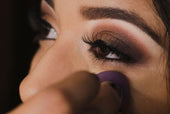
Enhance Your Eyes: A Guide to Eyeliner for Every Eye Shape with Liht Organics
Welcome to the Liht Organics blog, where we believe in celebrating the natural beauty of every eye shape. Today, we'r...
-
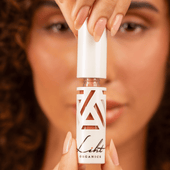
How to do makeup with only lipstick?
At Liht Organics, we believe in the power of clean beauty and the artistry of makeup. Makeup is more than just enhanc...
-

How to Clean Your Makeup Brushes in 6 Simple Steps
Cleaning your makeup brushes may seem like a tedious task, but it's an essential part of your beauty routine. Not onl...
-

Makeup Tips to Help You Look Your Most Flattering on Virtual Meetings!
After more than 2 years of work-from-home arrangement, and possibly hundreds of zoom calls and Google meet virtual me...
-
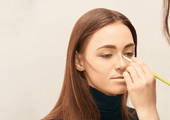
Learn How to Contour with This Simple Guide for Beginners
Want to take your makeup to the next level? Try contouring to achieve a more defined or sculpted look à la the Kardas...
-
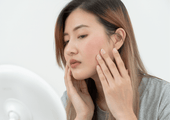
Essential and Easy Makeup Tips for Sensitive Skin
Living with sensitive skin conditions like eczema, psoriasis, and more is already not an easy feat. Throw in makeup t...
-
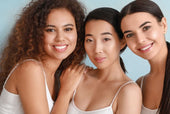
Raising Your Vibration: A Liht Organics Guide for Empowerment This International Women's Day
wp:paragraph As International Women's Day (IWD) approaches, it serves as a powerful reminder of the journey towards s...
-

The Beauty of Going Bare: Why Sleeping with Makeup is a No-No
Have you ever had one of those nights where you're too tired to clean off your makeup? You might believe, "Skipping...
-

Breast Cancer Awareness: Empower Your Beauty with Liht Organics Makeup
During October, we observe Breast Cancer Awareness Month as a way to unite and bring attention to breast cancer whil...
-

The Hidden Dangers of Carmine in Makeup Colorants: Embracing Healthier and Vegan Options
Makeup has become an integral part of our daily routines, allowing us to express our unique beauty. However, as we pr...
-

How can I ensure that my makeup products are organic and won't harm my skin?
When it comes to makeup, it’s important to be mindful of what you’re putting on your skin. With so many products on t...
-
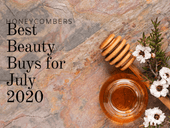
[FEATURE] HONEYCOMBERS – BEST BEAUTY BUYS IN JULY
by Nicole NithiyahWhat’s hot in our beauty hit list: Honest thoughts and top beauty stories we’re swooning over. As w...
-

Liht Organics Introduces Exclusive Gift Sets: Enhance Your Beauty This Festive Season!
As the holiday season approaches and the year draws to a close, Liht Organics is thrilled to present two enchanting g...
-

Get Spooktacular with the Best Halloween Makeup Ideas using Liht Organics' All-Natural, Vegan, and Cruelty-Free Cosmetics!
With Halloween just around the corner, it’s time to let your creativity shine and transform yourself into a spooky,...
-

Celebrating World Animal Day with Liht Organics: Embracing Natural Cruelty-Free Makeup
wp:paragraph As we observe World Animal Day, the team at Liht Organics takes great pride in honoring our pledge to...
-
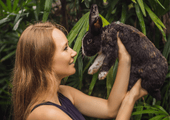
Reasons Why You Should Choose Cruelty-Free Cosmetics Instead!
With increasing exposés unveiling the ugly truth behind animal testing that goes on in the beauty industry, it is lit...
-

Celebrate Singles Day with Makeup That Empowers – 22% Off at LIHT Organics!
This Singles Day, treat yourself to beauty that goes beyond skin-deep. At LIHT Organics, we believe makeup is about s...
-

Preparing for the Cozy Beauty of Autumn: A Preview of Your Fall Look
As we bid farewell to the warm, sun-kissed days of summer, it’s never too early to start dreaming about the enchantin...
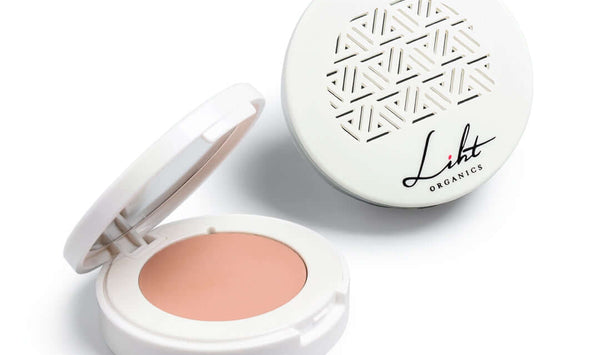
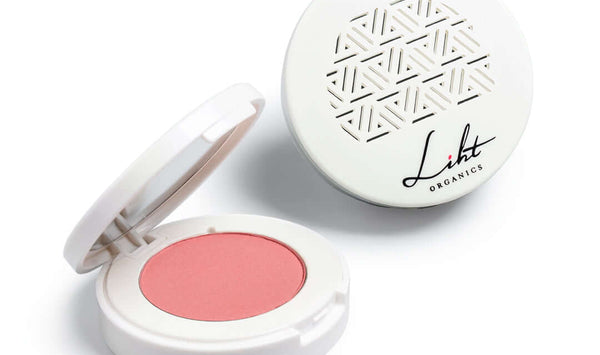
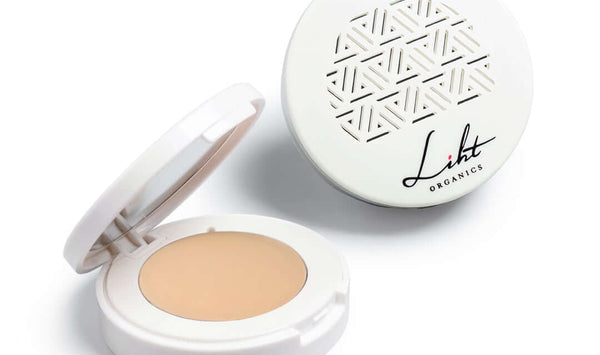
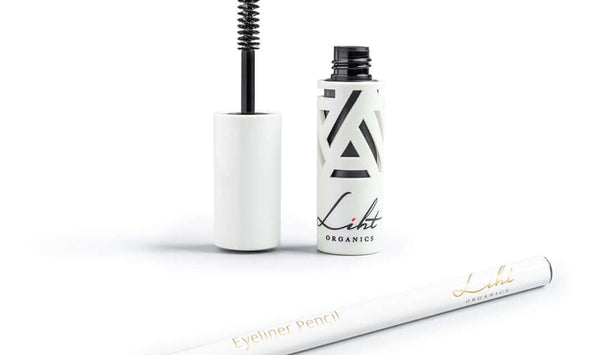
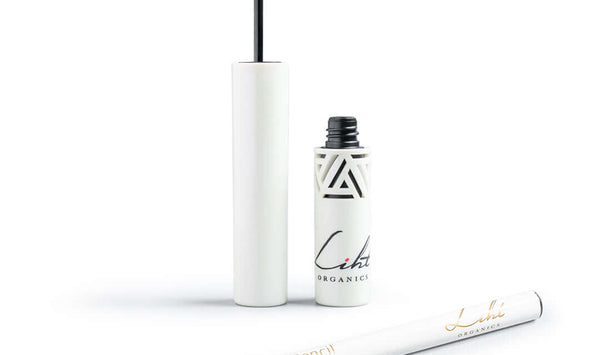
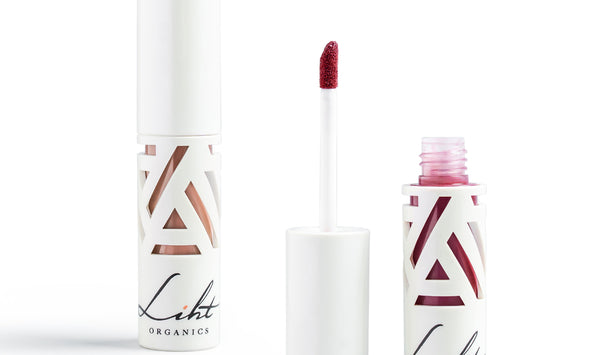
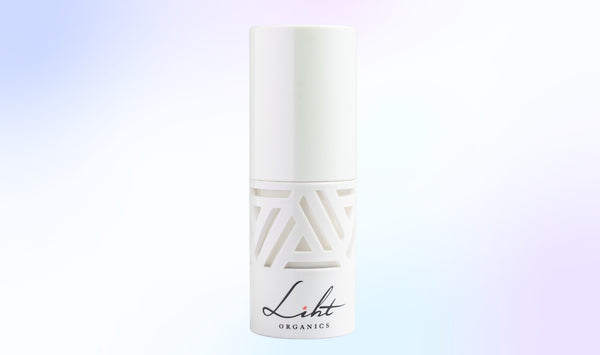

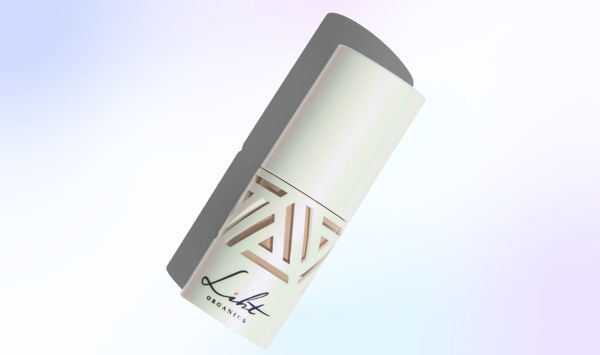
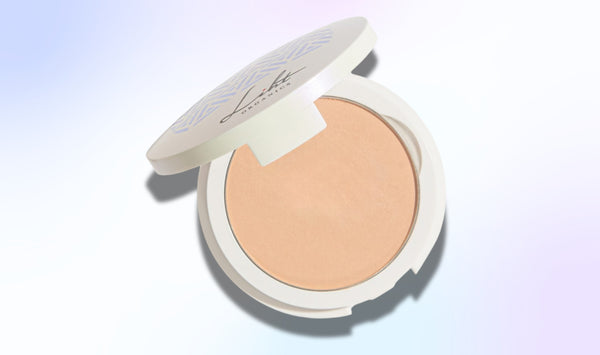
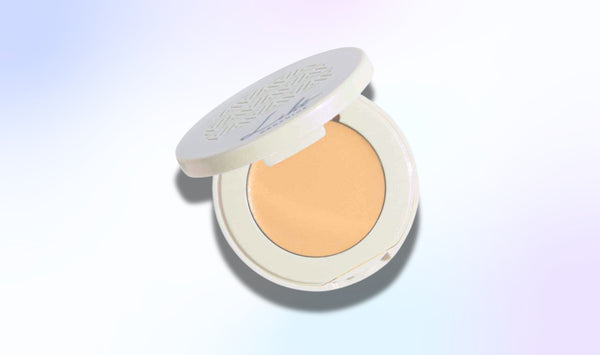
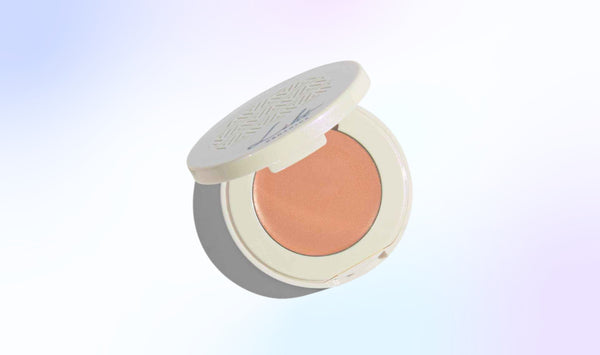
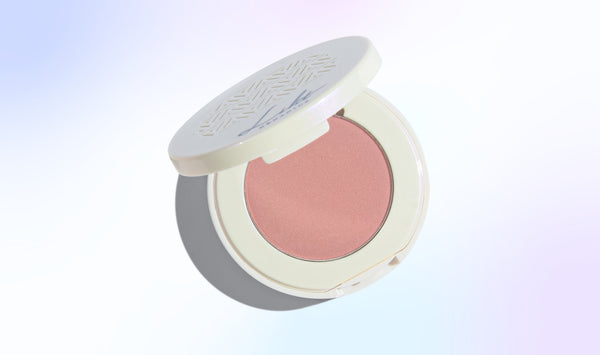
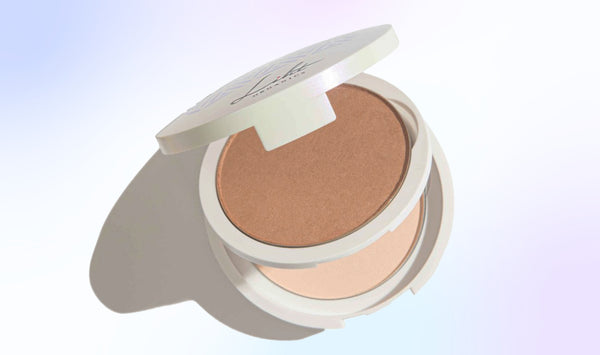
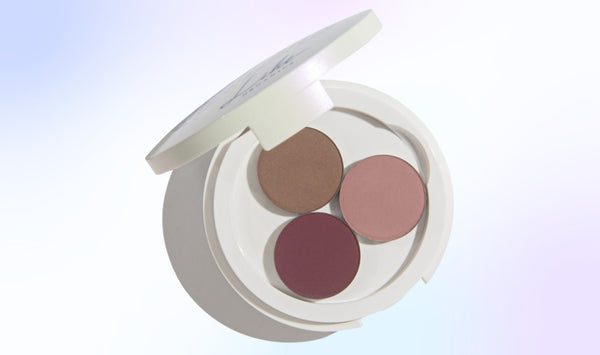
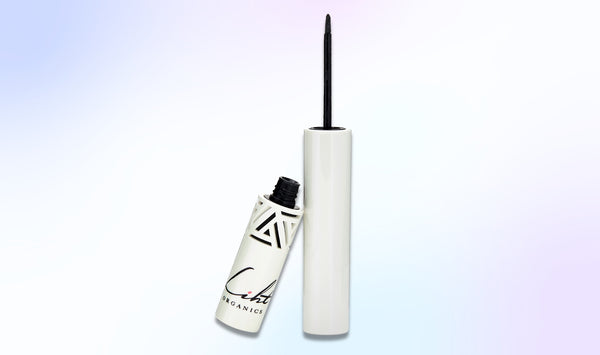
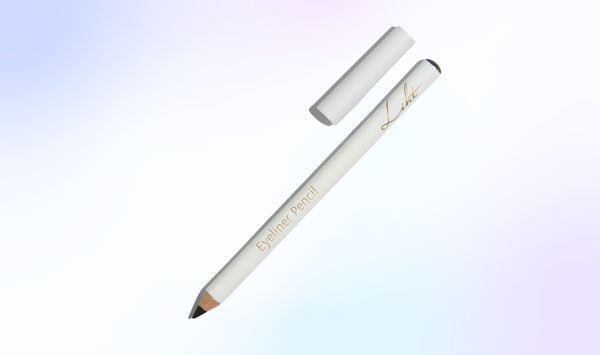
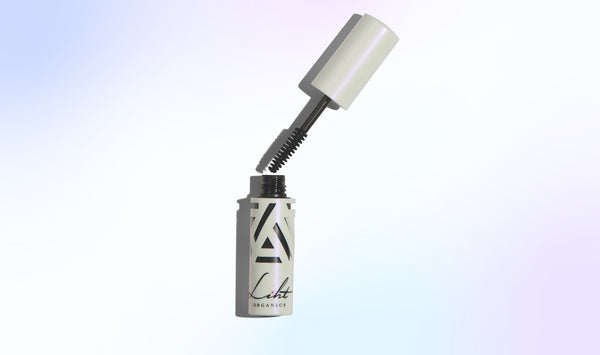
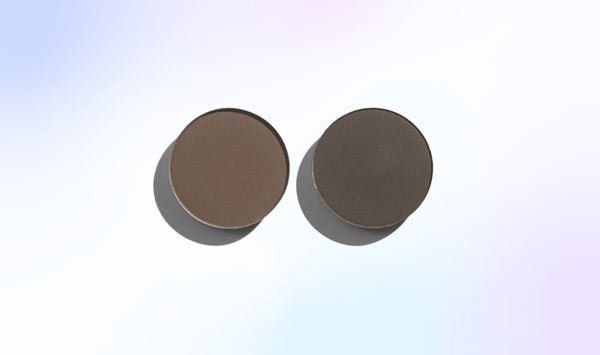
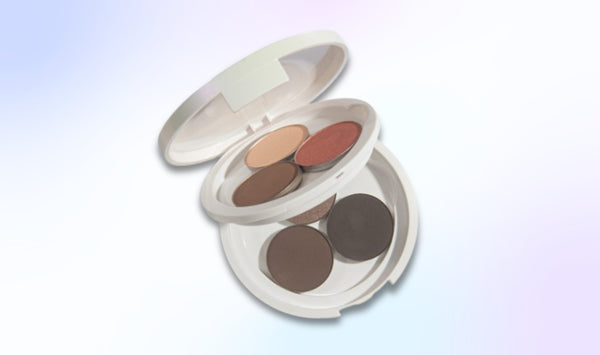
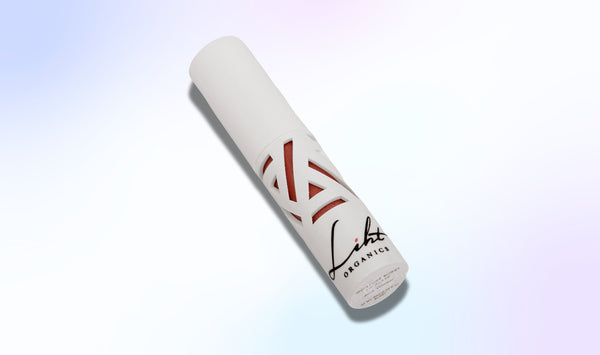
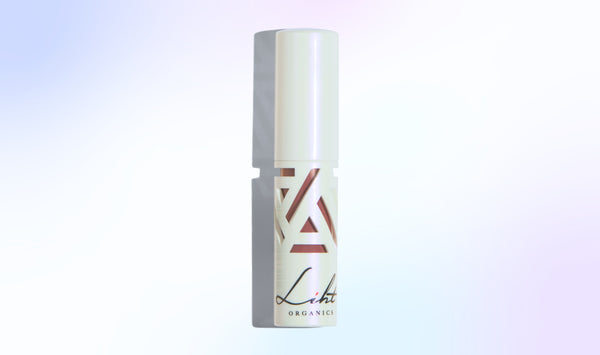
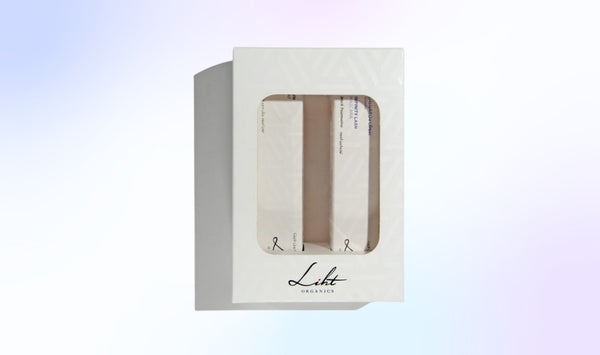
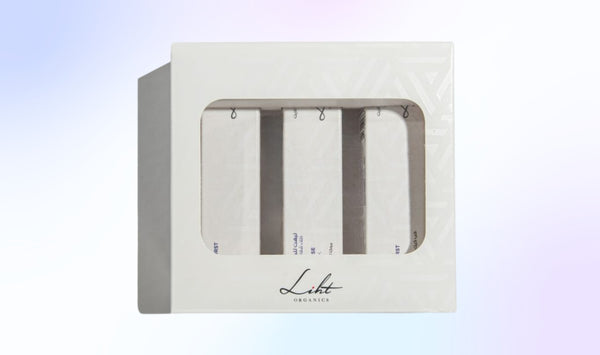


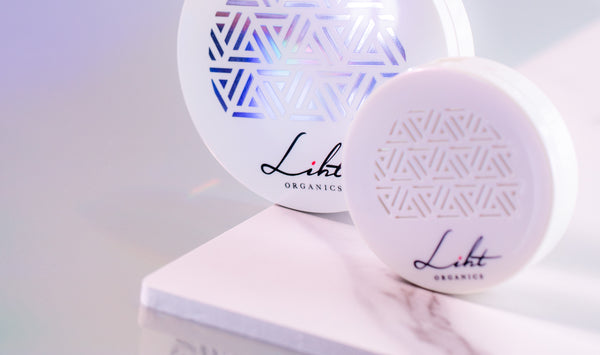
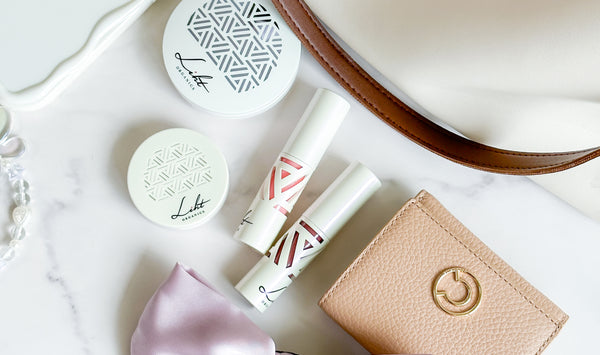
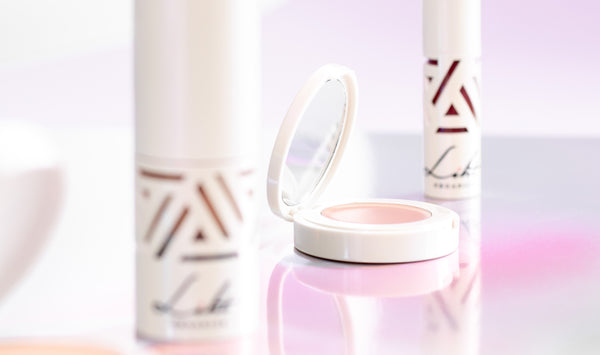




![[FEATURE] Liht Organics to debut at TFWA Asia Pacific show](http://lihtorganics.com/cdn/shop/articles/1_1.png?v=1759328400&width=170)
![[FEATURE] The Singapore-based organic makeup brand is a first-time exhibitor at this year’s TFWA Asia Pacific Exhibition in Singapore in May 2025](http://lihtorganics.com/cdn/shop/articles/2_1.png?v=1759328386&width=170)
![[FEATURE] Travel Retail Awards 2025 finalists - Best Make-up Product Color-Intense Liquid Lipstick – Liht Organics](http://lihtorganics.com/cdn/shop/articles/4_e2f54f0f-fcd1-46e7-9990-fc9d29e35131.png?v=1759328382&width=170)
![[FEATURE] Liht Organics targets expansion in travel retail](http://lihtorganics.com/cdn/shop/articles/3_1.png?v=1759328346&width=170)
































































